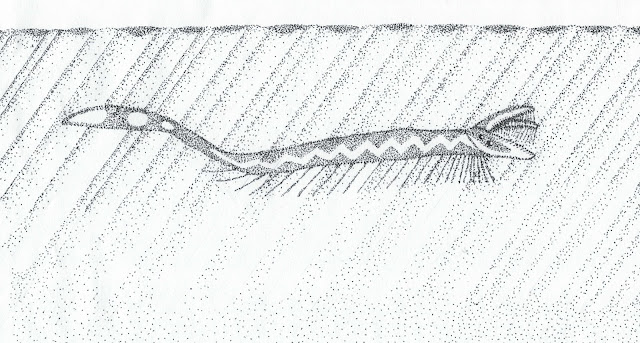There are principally three sources of oxygen on Mars. The most obvious one is oxygenic photosynthesis, performed by fractarians, some spongisporians and various microorganisms. This source is limited, as the high aridity on Mars prevents the growth of much vegetation and during the exceedingly long winters, some of the flora enter long phases of dormancy in which photosynthesis may be completely halted.
The second source is photolysis. The lack of a strong magnetosphere allows the solar rays to more easily penetrate the thin Martian air, in the process breaking up the molecules inside water vapor into oxygen and hydrogen. In the past, this process may have significantly contributed to the oxygenation of the atmosphere (Sivgin 2345), but the loss of much atmospheric mass and the extreme aridity of the planet have consequently made this a minor factor.
The third source comes from an unlikely location. In some regions on Mars, both in the southern and northern hemisphere, a special type of salt flat desert has formed. Under intense UV-radiation, sodium chlorides, left behind by an ocean that has long since evaporated, react with silicate minerals in the soil and form vast plains of perchlorate salts. Perchlorates occur naturally on Earth only in places like the Atacama Desert or Death Valley and are otherwise mainly produced and used in rocket- and pyrotechnics industries. They are highly toxic to almost all life as we know it, and cause thyroid and lung damage, as well as anemia in humans. The perchlorate deserts of Mars are possibly the most lifeless places on a planet that is already pretty dead. This is despite the perchlorate deserts close to the polar regions also happening to be some of the wetter parts of the Martian surface, as perchlorate acts as an excellent antifreeze. Small streams and pools, sometimes even oases of brine lakes are sprinkled throughout these deserts, but they are so toxic that no lifeform can survive in them.
Almost no lifeform.
On Mars, as on Earth, extremophile microorganisms exist, which can actually metabolize perchlorate salts. These so-called halophilic Perchloareonta, which may dwell in almost every one of these brines, can reduce perchlorate back into harmless chloride. The amazing thing about this reaction is that it generates free oxygen as a waste product. The perchlorate deserts, as lifeless as they may seem, are downright infused with these thriving organisms and are thus one of the major oxygen-providers of the Martian surface (and potentially sub-surface). And the best thing about them is that they “operate” almost year-round.
The Horus Operations have been quick to understand the potential of these deserts. While the perchlorates have been used for a quite a while already as oxidizers for rocket-fuels, recent experiments have begun constructing bio vats in which these organisms are raised and fed in order to more easily generate oxygen for our own habitats.
References:
- Sivgin, T.K.: Life on a Dead Planet. The first 3 billion years of Evolution on Mars, Zürich 2345.






